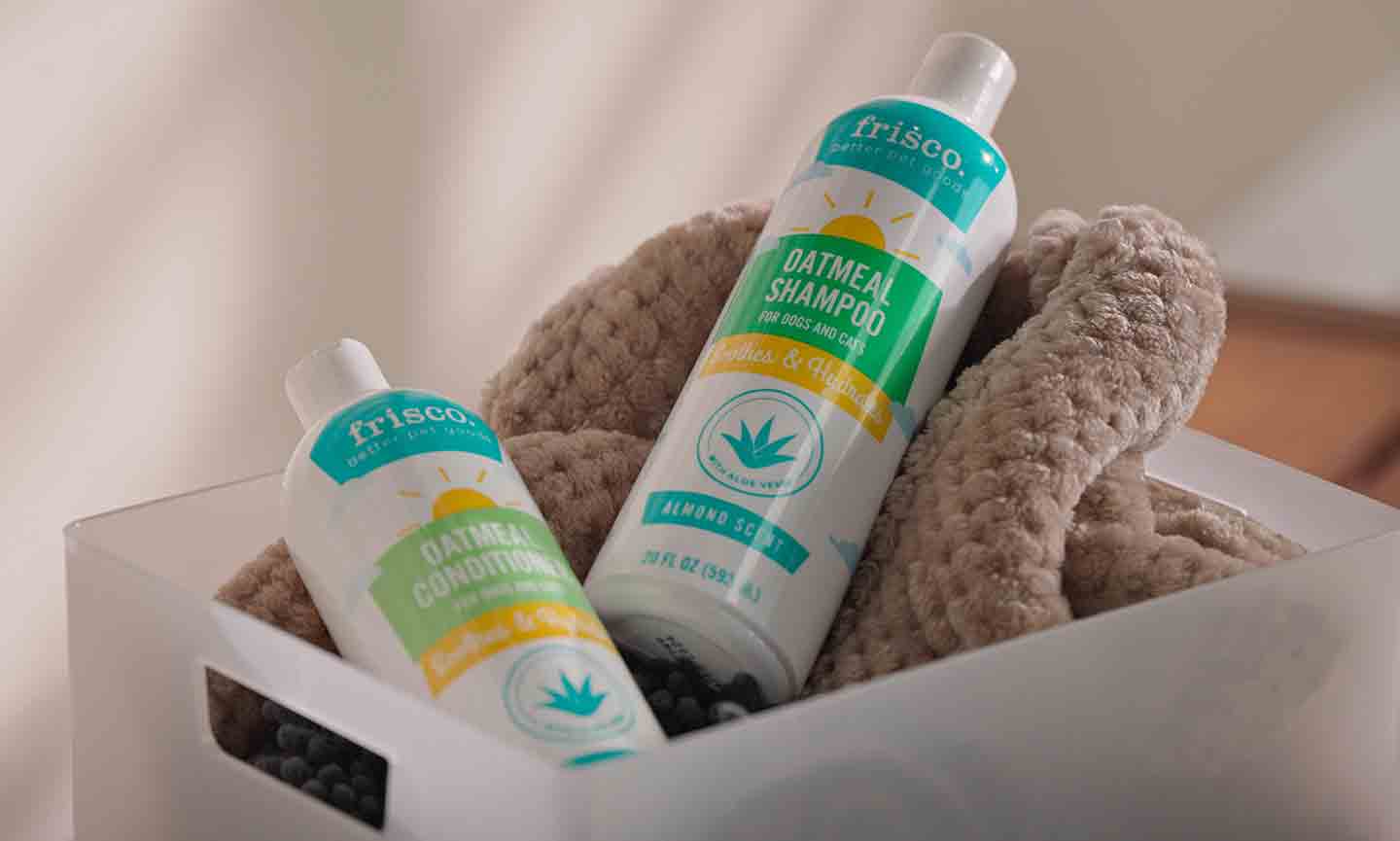In This Guide:
Types of Dog Dandruff
Dog dandruff, aka seborrheic dermatitis, has two main forms:- Seborrhea sicca (dry dandruff)
- Seborrhea oleosa (greasy dandruff)
- Dogs suffering from primary seborrhea have a skin condition “that causes an abnormality in the formation of the outer layer of the skin or in skin turnover,” says Dr. Cain. One example is the disease ichthyosis, which causes a dog’s skin to retain large flakes or scales. This genetic condition affects certain dog breeds like Golden Retrievers or American Bulldogs.
- Secondary seborrhea usually arises due to an underlying condition, such as allergies or skin infections. Parasites called Cheyletiella can also cause secondary scale. These mites are large and sometimes mistaken for dandruff, which is why they’re also known as walking dandruff. If you observe the Cheyletiella mites long enough, you can see the flaky scales walking across your dog’s skin. (Creepy, we know.)
What Causes Dandruff on Dogs?
It’s essential to understand the underlying cause behind your dog’s dandruff. Here are some common factors that cause dog dandruff:
- Environmental Influences: Cold weather and low humidity can increase dandruff, aggravating your dog’s flaky skin problem. This is more likely to happen during the winter months if your dog is inside a warm, dry house all day.
- Stress: Just like humans, dogs can experience anxiety. Emotional feelings or situations can exacerbate shedding and flaky skin.
- Parasites: These tiny little organisms can live on your dog and cause many issues, including dandruff. Fleas and mites are common causes of dandruff, so year-round external parasite prevention is vital.
- Infections: It’s normal for your pet to have bacteria and yeast on their skin, but occasionally, these can lead to skin infection. Dandruff could be one of the signs there’s a bacterial infection or other problem with your pup’s skin.
- Allergies: “Probably the No. 1 reason why we see our patients in the clinic is because they have an allergic skin disease,” says Dr. Cain. Environmental allergies or food allergies can make your pup’s skin feel dry, leading to flaky, itchy skin.
- Disease: Autoimmune and endocrine diseases can manifest with dandruff as a symptom. One example is sebaceous adenitis, a condition in which the immune system attacks the sebaceous or oil glands of the skin, causing them to be destroyed. Other examples are hypothyroidism or Cushing’s Disease, which can cause skin problems leading to dog dandruff.
- Diet: A poor-quality diet or nutrient deficiency can compromise your dog’s skin health, leading to dandruff or other dermatological issues that affect the quality of your dog’s skin and coat.
How To Get Rid of Dandruff on Your Dog
Because dog dandruff can have many causes, there isn’t just one way to treat it. Here are the best places to start if you’re interested in treating dandruff with home remedies:1 Try Gentle Brushing
2 Bathe Your Dog
Washing your pet can also rinse away the dandruff and moisturize their dry skin. Always use a shampoo that’s meant for dogs, not humans, and be sure your dog shampoo has moisturizing ingredients. Good dog shampoos can be oatmeal-based or contain ceramides. These products help boost the normal skin barrier function.
After shampooing, finish with a conditioner or cream rinse to add more moisture.
In some cases, your veterinarian may recommend a medicated shampoo.
3 Use a Humidifier
4Consider Your Dog’s Diet
When To See Your Vet
Generally, if you notice dandruff on your dog, it’s not a huge cause for concern. However, dandruff can signify a more serious health issue bothering your pet. Not sure whether to call your vet? Dr.Cain recommends evaluating your dog’s overall health. Ask yourself:- Does your pet’s skin look red?
- Is there a lot of dandruff, or are the flakes very big?
- Are they suddenly experiencing itchiness?
- Does your dog smell bad?
- Does your dog’s coat look especially greasy or oily?
- Are they experiencing hair loss?
FAQs About Dandruff on Dogs
Q:
Why does my dog have white flakes in their fur?
Q:
Should I be worried if my dog has dandruff?
Q:
What’s the best dandruff shampoo for dogs?
More Dog Grooming Solutions
Share:




















